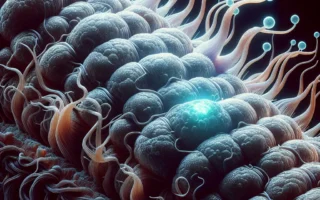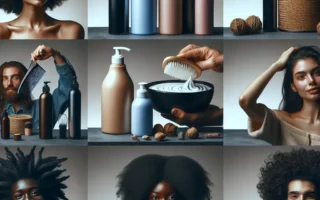The Chemistry of Hair: What You Need to Know
Understanding the chemistry of your hair is essential in crafting an effective haircare routine. Each strand of hair is composed of a complex structure primarily made up of a protein called keratin. This protein contains long chains of amino acids, which are held together by chemical bonds. The strength and elasticity of your hair are determined by the disulfide bonds, hydrogen bonds, and salt bonds within the protein structure.
Disulfide bonds are the strongest type of chemical bonds present in the hair shaft, and they are responsible for the overall strength and resilience of your hair. When these bonds are broken, typically through chemical processes like perming or coloring, the structure of the hair is altered. Understanding this process is crucial in protecting the integrity of your hair during styling treatments.
Hydrogen bonds are more easily manipulated and are the bonds responsible for the flexibility and elasticity of the hair. These bonds can be temporarily broken by water or heat, allowing for hair to be styled into different shapes. Additionally, salt bonds play a role in the overall stability of the hair structure.
Furthermore, the natural oils produced by the scalp, known as sebum, play a vital role in hair health. Sebum contains a mixture of triglycerides, fatty acids, and waxes, which provide essential nourishment and protection to the hair shaft. Understanding the role of sebum in maintaining the optimal moisture balance of the hair is key to formulating a successful haircare regimen.
By grasping the basic principles of the chemistry of hair, individuals can make informed decisions when selecting haircare products and treatments. This knowledge empowers individuals to properly nourish and protect their strands, resulting in healthy, beautiful hair.
The Physics of Haircare: How to Style and Protect Your Strands
Understanding the physics of haircare is essential for anyone looking to style and protect their strands effectively. The structure of hair is complex, with each strand composed of three layers: the cuticle, cortex, and medulla. The arrangement of these layers determines the strength, elasticity, and overall appearance of your hair.
When it comes to styling, it’s important to consider the physics of how heat and styling tools interact with your hair. Heat styling can alter the hydrogen bonds in the cortex of the hair, allowing for temporary changes in shape. However, excessive heat can lead to damage and breakage, so it’s crucial to use heat protectant products and regulate the temperature of styling tools.
Protecting your hair from environmental factors also ties back to physics. UV radiation, humidity, and pollution can all have an impact on the structure of your hair. Understanding how these factors interact with your strands can help you choose the right protective products and hairstyles to minimize damage.
In conclusion, mastering the physics of haircare is the key to effective styling and protection. By understanding the structure of your strands and how various factors affect them, you can make informed choices to keep your hair healthy and beautiful.
The Biology of Healthy Hair: Nourishing Tips for Every Hair Type
The biology of hair is a complex and fascinating topic that plays a crucial role in understanding how to properly nourish and care for your strands. Hair is primarily composed of a protein called keratin, which is also found in our skin and nails. The health and appearance of our hair are influenced by factors such as genetics, diet, and overall health. Different hair types, such as straight, wavy, curly, and coily, each have specific characteristics and needs.
Understanding the unique biology of your hair type is essential for selecting the right nourishing tips and products. For example, individuals with dry or curly hair often benefit from moisturizing shampoos and conditioners that help retain natural oils and prevent frizz. On the other hand, those with fine or oily hair might require lighter, volumizing products to avoid weighing down their strands.
Nourishing your hair from the inside out is also crucial. A balanced diet rich in vitamins, minerals, and proteins, such as biotin, vitamin E, and omega-3 fatty acids, can promote healthy hair growth and strength. Additionally, staying hydrated and minimizing stress can contribute to the overall health of your hair.
By understanding the biology of healthy hair and tailoring your haircare routine to your specific hair type, you can effectively nourish and maintain luscious locks that radiate vitality and beauty.



